In a world filled with diverse forms of written expression, Arabic script emerges as a mesmerizing treasure trove of beauty and intrigue, beckoning those who dare to delve into its mysteries. The art of Arabic calligraphy is a symphony of curves, loops, and intricate strokes that embody the rich history, culture, and spirituality of the Arab world. Embracing a unique combination of the organic and the precise, this ancient script captivates the eye and evokes a sense of wonder that transcends time and borders.
Often described as a dance of the hand, Arabic calligraphy is an art form that serves as a visual representation of the spoken word. Each elegant letter is meticulously crafted, carrying within it the weight of centuries of tradition and wisdom. From the sweeping curves of the Naskh script to the delicate intricacies of the Thuluth style, every brushstroke tells a story and adds depth to the written word. The boldness of the Kufic script exudes power and authority, while the grace of the Diwani script exudes an air of elegance and refinement.
But beyond its visual allure, Arabic calligraphy holds a deeper significance rooted in its cultural and religious context. For centuries, the Quran has been written and preserved in this script, emphasizing the sacred connection between language, spirituality, and art. This melange of aesthetics and sacredness is what gives Arabic calligraphy its undeniable allure, attracting both artists and enthusiasts alike to embark on a journey of discovery, harmony, and self-expression.
The Fascination and Puzzle of Arabic Script
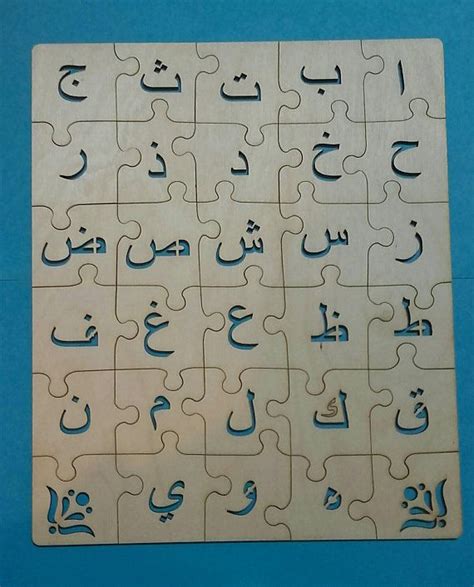
Step into the world of Arabic writing, and you are instantly captivated by its irresistible charm and enigmatic nature. This ancient form of communication possesses an allure that transcends words and crosses the boundaries of culture and time. Delve deeper into the art of Arabic script, and you will encounter a unique blend of elegance and mystery that ignites the imagination.
The Mesmerizing Aesthetics
Arabic writing boasts a mesmerizing aesthetic quality that is hard to match. Its intricate curves, eloquent lines, and delicate accents come together to form a visual symphony that captures the eye and leaves a lasting impression. The fluidity of the script, reminiscent of graceful calligraphy, lends an air of sophistication to each stroke, making it a true delight to behold. The sheer beauty of Arabic writing is a testament to the skill and precision required to master this ancient art.
The Intricate Symbolism
Beyond its enchanting aesthetics, Arabic writing is a treasure trove of symbolism and hidden meanings. Each individual letter carries a profound significance, and when combined, these symbols create a tapestry of ideas and messages. The fusion of form and meaning in Arabic script creates a unique reading experience, where each word becomes a visual puzzle waiting to be unraveled. This depth of symbolism adds an extra layer of intrigue to the written word, inviting contemplation and further exploration.
The Gateway to Culture
The allure of Arabic writing extends beyond its visual appeal and hidden messages. It is a gateway to a rich and diverse culture, deeply rooted in history and tradition. Arabic script holds the key to unlocking ancient texts, profound poetry, and sacred religious texts. By delving into the enigma of Arabic writing, one can gain a deeper understanding of the Arab world, its values, and its people. It serves as a bridge that connects generations, allowing the preservation and dissemination of knowledge and heritage.
In conclusion, Arabic writing encompasses an undeniable allure and enigma that transcends mere words. Its captivating aesthetics, intricate symbolism, and cultural significance make it a treasure to behold and explore. The beauty and puzzle of this ancient script continue to inspire and fascinate, offering a mesmerizing journey into the mysteries of language.
Uncovering the Mystique: The Aesthetics of Arabic Calligraphy
Exploring the enigmatic allure of Arabic calligraphy, this section delves into the captivating beauty and profound elegance that lie within the art of writing. Through a fusion of artistic mastery and cultural heritage, Arabic calligraphy reveals a mesmerizing world of intricate strokes and ornate letterforms.
Arabic calligraphy, an ancient tradition rooted in the rich tapestry of Islamic culture, embodies a profound sense of spirituality and artistic expression. Each stroke of the pen carries a sense of rhythm and harmony, creating a unique visual symphony that captivates the beholder. The skillful manipulation of line thickness and curvature, combined with intricate embellishments, yields an ethereal sense of beauty that transcends mere words.
One of the defining characteristics of Arabic calligraphy is its fluidity and dynamism. The letters seem to dance across the page, forming a seamless connection between the written word and the visual representation. The deliberate flow and balance of each letter give the text a sense of life and energy, inviting the reader to become immersed in its lyrical enchantment. |
The intricacies of Arabic calligraphy extend beyond its aesthetic appeal, conveying a deeper meaning and symbolism. Just as each letter is meticulously crafted, the arrangement of words and phrases holds significant cultural and religious significance. Arabic calligraphy serves as a medium for preserving the sacred texts of the Quran, imbuing the written word with a sense of reverence and holiness. It is through this artistic form that the beauty of Arabic language is brought to life. |
Appreciating the beauty of Arabic calligraphy requires an understanding of its historical context and the immense skill required to master this art form. Calligraphers undergo years of training and practice to achieve mastery, honing their craft with utmost dedication and precision. The end result is a visual manifestation of patience, discipline, and devotion–a testament to the profound significance of Arabic calligraphy in the Islamic world. |
Exploring the Origins: A Historical Journey through the Enigmatic Evolution of Arabic Script
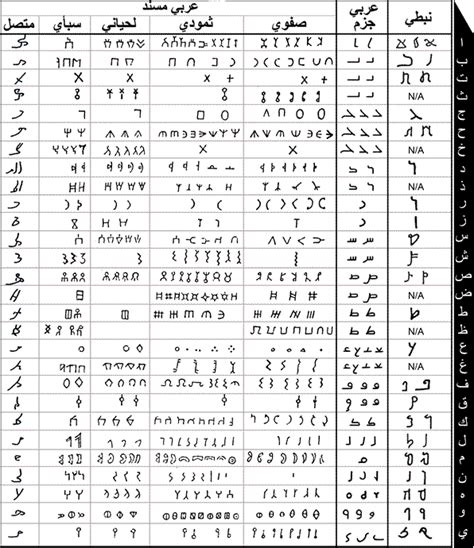
In this segment, we delve into the mesmerizing voyage that captures the birth, transformation, and expansion of one of the most alluring and enigmatic scripts in history. Tracing its roots back to ancient civilizations, we embark on an exploration of the diverse historical influences that have shaped the development of Arabic writing.
Embarking on this historical journey, we encounter the intricate tapestry of cultural encounters and exchange that engendered the earliest forms of Arabic script. From the ancient pictographic inscriptions of the Proto-Sinaitic script to the monumental cursive script known as Kufic, we uncover the foundational phases that laid the groundwork for the mesmerizing calligraphic tradition of Arabic writing as we know it today.
- Proto-Sinaitic: Unearthing the earliest sparks of communication
- Nabatean Script: Tracing the script's Arabian roots
- Kufic: The majestic script of the Quran and the Islamic empire
- Maghrebi and Andalusian Scripts: Exploring the regional variations
- Thuluth: Evoking elegance and beauty in the medieval period
Moreover, we examine the profound influence of Islamic calligraphy on the development of Arabic writing, as expressions of religious devotion and artistic excellence converged to create masterpieces that still captivate us today. Unveiling a world where the written word transcended its utilitarian purpose, we witness how calligraphy blossomed into a revered art form that permeated all aspects of life in the Arabic-speaking world.
By the end of this illuminating excursion, we hope to shed light on the magnificent voyage of Arabic writing, revealing not only its historical significance but also the enduring allure behind the beauty and mystery of each stroke and curve that constitutes the rich tapestry of Arabic script.
The Arabic Alphabet: An Extraordinary and Intricate System
The Arabic script is renowned for its distinctive and intricate system of writing, which stands out as one of the most unique and fascinating alphabets in the world. This ancient script, rich in history and culture, embodies the essence of a language spoken by millions across the globe.
Exquisite Complexity
The Arabic alphabet comprises twenty-eight letters, each possessing its own distinct shape and sound. This complex system is far from being a simple phonetic representation; it is a work of art that combines both aesthetic beauty and linguistic precision. Every letter can be written in several forms, depending on its position within a word, adding complexity and visual appeal to the written text.
Artistic Expression
Arabic writing is not merely a means of communication, but also a form of artistic expression. The elaborate calligraphy, with its graceful curves and intricate embellishments, transforms written words into visually captivating works of art. The art of Arabic calligraphy has been practiced for centuries, with skilled calligraphers mastering the delicate balance of form and creativity.
A Window to Heritage
The Arabic alphabet encapsulates the rich cultural heritage and linguistic diversity of the Arabic-speaking world. It serves as a window to the past, connecting us to ancient civilizations and their wisdom. Arabic literature, poetry, and religious texts, such as the Quran, showcase the expressive capabilities and depth of the Arabic language, made possible by its unique alphabet.
A Source of Intrigue
The Arabic script captivates the imagination with its mystery and allure. It invites those unfamiliar with its characters to unravel the secrets held within its loops and dots. Each word becomes a puzzle waiting to be solved, adding an element of intrigue to the act of reading and deciphering the written word.
In conclusion, the Arabic alphabet stands as a testament to the beauty, complexity, and cultural significance of the written word. Its harmonious blend of form and function, along with its calligraphic splendor, makes it a truly extraordinary and captivating system of writing.
From Ancient Scrolls to Modern Typography: The Evolution of Arabic Script
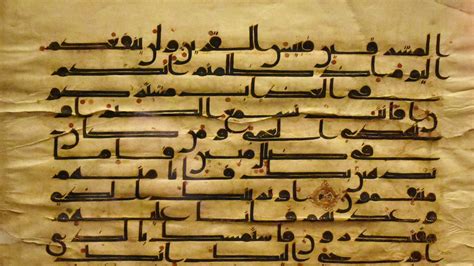
In this section, we will take a closer look at the fascinating journey of the Arabic script, tracing its development from ancient scrolls to the modern realm of typography. We will explore how this beautiful and mysterious writing system has evolved over time, adapting to various historical, cultural, and technological influences.
- The Origins: The beginnings of Arabic writing can be traced back to the 4th century CE, when the Arabic alphabet was derived from the Aramaic script. Its earliest forms were carved into stone and written on scrolls, serving as a means of preserving and transmitting knowledge.
- The Islamic Golden Age: During the Islamic Golden Age, which spanned from the 8th to the 14th centuries CE, Arabic calligraphy flourished as a high art form. Highly skilled calligraphers brought elegance and sophistication to the script, creating intricate and visually stunning masterpieces.
- Middle Ages to Modern Times: With the spread of Islam, the Arabic script extended its reach beyond the Arabian Peninsula. It became the language of the Quran and the official script of the Islamic world, influencing the development of writing systems in various regions. The typographic revolution in the 19th century introduced printing presses and movable type, revolutionizing the way Arabic script was reproduced.
- The Influence of Technology: In the digital age, Arabic typography has faced unique challenges and opportunities. Designers and typographers have worked to adapt the script to the constraints and possibilities of electronic media, exploring innovative ways to make Arabic script accessible and visually appealing on screens.
- Contemporary Expressions: Today, Arabic typography is a vibrant field of creativity, where traditional calligraphy coexists with contemporary designs. From advertising and branding to book covers and street art, Arabic script continues to captivate and inspire, showcasing its enduring beauty and its ability to convey messages with a touch of mystery.
Through the evolution of Arabic script, we gain a deeper understanding of the rich cultural heritage and the artistic potential embedded within each stroke and curve. From ancient scrolls to modern typography, the beauty and enchantment of the written Arabic word continue to captivate and leave a lasting impression.
The Mastery of Arabic Penmanship: Unraveling the Intricacies of Calligraphic Strokes
Delving into the enchanting world of Arabic penmanship unveils a captivating blend of artistry and skill, where intricately woven strokes give life to each letter and unlock its true beauty. Through the art of calligraphy, enthusiasts embark on a journey of mastering the nuances of Arabic letters, rendering them as expressions of elegance and refinement.
Exploring the realm of Arabic penmanship entails comprehending the fundamental principles behind each stroke. Every letter consists of several distinct components, intricately interconnected and arranged to create a harmonious composition. Masters of this art form are skilled in balancing the delicate harmony between the vertical and horizontal elements, understanding how each stroke flows into the next, and ultimately achieving the desired visual impact on the page.
- Discovering the Elemental Strokes: In the pursuit of mastery, aspiring calligraphers steadily embark on the systematic study of the elemental strokes that form the foundation of Arabic penmanship. Unveiling the intricacies of the different stroke types, such as the straight, the circular, and the diagonal, lays the groundwork for creating elaborate and breathtaking compositions.
- Understanding Rhythm and Proportions: The art of Arabic calligraphy embraces a sense of rhythm and proportion, where strokes dance gracefully across the page to create a symphony of visual harmony. By meticulously studying and internalizing the principles governing the sizes, lengths, and spacing of letters, practitioners establish a solid foundation for cultivating their own unique style.
- Exploring the Variations: Arabic penmanship encompasses various styles, each with its own distinctive features and historical significance. From the flowing and timeless script of Thuluth, to the bold and opulent strokes of Diwani, the enthusiastic calligrapher journeys through time, delving into the origins and evolution of each style, and embracing the versatility and expressive potential they offer.
- Expressing Beauty and Meaning: Beyond the aesthetic appeal, Arabic calligraphy holds a deeper significance. It serves as a vehicle for conveying noble ideals, poetic verses, and religious scriptures. Through the mastery of penmanship, calligraphers blend the aesthetic aspects with the profound meaning behind each word, creating an emblem of cultural heritage and intellectual expression.
The art of Arabic penmanship demands patience, perseverance, and a deep appreciation for the craft. As one delves into the intricate strokes and delicate balance of Arabic letters, an exquisite harmony between art, language, and culture unfolds, providing a glimpse into the captivating world of calligraphy.
Decoding the Meaning: Unraveling the Symbolism behind Arabic Calligraphy
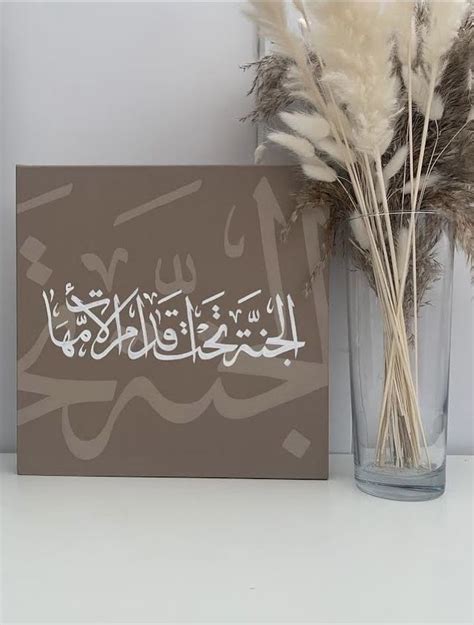
In the realm of Arabic calligraphy lies a world of profound hidden meanings and intricate symbolism. Each stroke and curve of the Arabic letters holds a deeper significance, capturing the essence of the written word in a visual form. Through this art form, we embark on a journey of decrypting the sacred messages imbued within Arabic calligraphy.
Exploring the mystique behind Arabic calligraphy unveils a tapestry of symbolism that enriches the written word with profound associations. The flowing lines and graceful arcs of the script not only convey the literal meaning of the text but also serve as a vessel for deeper emotional and spiritual expressions.
- Fluidity: The harmonious flow of Arabic calligraphy reflects the fluidity of human emotions and the universal interconnectedness of human experiences. It symbolizes the unity of the written word with the human soul, captivating the reader and allowing them to immerse themselves in the emotions conveyed.
- Elegance: The ornate loops and decorative flourishes in Arabic calligraphy represent the elegance and refinement of the written word. Through intricate design, the calligrapher elevates the text to a higher aesthetic plane, emphasizing the significance and grandeur of the message.
- Depth: Arabic calligraphy delves into the depths of meaning, embodying the richness and complexity of the written word. The interplay of different script styles and techniques adds layers of depth, inviting those who encounter it to contemplate and decipher the hidden messages within.
- Unity: Arabic calligraphy serves as a unifying force, transcending cultural and linguistic boundaries. The mastery of this art form allows diverse communities to connect, appreciate, and understand the beauty of written Arabic, fostering a sense of unity and shared heritage.
- Spirituality: The allure of Arabic calligraphy lies in its spiritual essence. Many calligraphic texts feature religious verses or poetic quotes, inviting contemplation and inspiring a connection with the divine. The intricate brushstrokes serve as a tangible representation of the sacred and the transcendent.
By unraveling the symbolism woven into the art of Arabic calligraphy, we gain a deeper understanding and appreciation for the beauty and power of the written word. The ancient tradition of this art form continues to captivate and mesmerize, reminding us that the significance of language extends far beyond mere words and letters.
Preserving Cultural Identity: The Significance of Arabic Script in Arab Societies
Deeply intertwined with the rich cultural heritage of Arab societies, the written form of the Arabic language plays a crucial role in preserving and safeguarding their unique cultural identity. This article explores the profound significance of Arabic script as a cornerstone of Arab heritage, illuminating its role in shaping the identity, communication, and cultural expressions of diverse Arab communities.
Arabic script symbolizes more than just a method of communication; it embodies the essence and historical legacy of Arab societies. Serving as a visual representation of their collective memory, the intricate calligraphy and elegant curves of Arabic script evoke a sense of awe and reverence. This enchanting and harmonious artistic expression has mesmerized generations, becoming an emblem of the Arab world's rich culture and artistic excellence.
Within Arab societies, the act of writing in Arabic script holds a sacred place. It serves as a powerful tool for preserving their traditions, folklore, and ancient knowledge, passed down through generations. The written word in Arabic script allows the transmission of cultural and historical narratives, enabling the sustenance of traditions, customs, and values that define Arab identity.
| Language Diversity: | Arabic script provides a unifying force among the diverse linguistic, ethnic, and cultural groups within the Arab world. It grants them a shared writing system that transcends regional variations in spoken dialects, fostering a sense of unity and collective identity. |
| Religious Significance: | The Arabic script holds immense religious significance as the sacred language of Islam. The Quran, the central religious text of Islam, is written in Arabic script. This spiritual connection further amplifies the role of Arabic writing in Arab societies, enabling them to preserve and perpetuate their religious traditions and knowledge. |
| Poetry and Literature: | Arabic script has served as a medium for the beautifully crafted poetry and literature that have flourished in Arab societies for centuries. Arab poets and writers have skillfully employed the nuances of written Arabic to capture emotions, tell stories, and explore the depths of human experiences, solidifying language's prominence in the preservation of cultural heritage. |
In conclusion, the Arabic script in Arab societies is far more than a mere tool of written communication. It is a treasured symbol of cultural identity, a means of preserving traditions, and a conduit for emotional expression. Understanding its profound significance can foster a greater appreciation for the beauty and importance of Arabic script in the Arab world, allowing for the continued preservation and celebration of Arab cultural heritage.
Connecting Cultures: The Impact of Arabic Script on a Global Scale
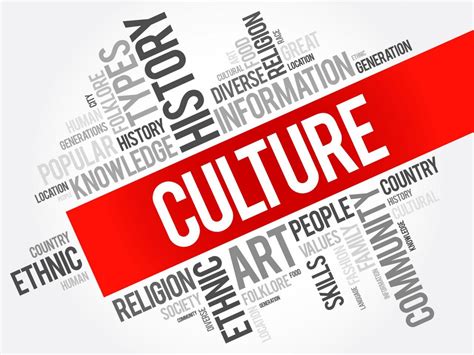
The power of language to transcend boundaries and bridge gaps between cultures is undeniable. In this section, we explore the remarkable global impact that Arabic script has had in breaking down language barriers and fostering connection and understanding.
Cultural Exchange: Arabic script, with its intricate calligraphy and rich artistic tradition, has captivated people from diverse backgrounds, sparking a fascination with the beauty and elegance of this ancient writing system. | Communication in Trade: Arabic writing has played a pivotal role in facilitating trade and commerce across regions. Its widespread use in markets and commercial establishments has allowed merchants from different nations to communicate effectively, fostering economic growth and global exchange. |
Literary Legacy: The Arabic language holds an esteemed position in the world of literature, with works spanning various genres and time periods. The influence of Arabic writing can be seen through translations and adaptations of Arabic literary works into different languages, enriching global literature and promoting cross-cultural dialogue. | Educational Opportunities: Learning Arabic script has become increasingly popular among non-native speakers, driven by a desire to understand and appreciate the cultural heritage it represents. The availability of Arabic language courses and resources has opened doors for individuals to engage with this ancient script and its associated cultural nuances. |
Digital Age: As the world becomes more interconnected through technology, Arabic writing has transcended traditional mediums and found its place in the digital realm. The ubiquity of Arabic script in digital spaces has fostered cross-cultural communication, allowing individuals from diverse backgrounds to connect and share ideas. | Expression and Identity: Arabic script serves as a source of pride and identity for Arabic-speaking communities worldwide. It symbolizes a rich heritage, cultural heritage and serves as a means of preserving cultural identity in diaspora. Through calligraphy and written art, individuals can express their unique experiences and emotions, enabling a deeper understanding of diverse perspectives. |
In examining the global impact of Arabic writing, it becomes apparent that its allure and influence extend far beyond language itself. Through its beauty, history, and ability to foster connection, Arabic script serves as a powerful force in transcending language barriers and promoting global understanding.
The Efficacy of Language: Arabic Calligraphy in the Islamic Aesthetic of Art and Architecture
Within the realm of Islamic art and architecture lies a captivating aspect that transcends the mere visual appeal – the profound healing power of words. Arabic calligraphy, with its harmonious blend of aesthetics and spirituality, offers a remarkable medium through which the written word assumes a transcendent form, inspiring both the mind and the senses.
Subtly weaving together intricate motifs, profound symbolism, and the graceful strokes of the Arabic script, calligraphy serves as a conduit for the expression of divine messages and the embodiment of spiritual ideals. Each curve and line, meticulously crafted by the skilled hands of calligraphers, carries with it a deeper significance and a profound resonance, inviting contemplation and imbuing spaces with a sense of serenity and harmony.
Islamic architecture, with its grand mosques, serene madrasas, and majestic palaces, seamlessly incorporates the intricate art of Arabic calligraphy into its design. From the magnificent arches of Alhambra to the elegant domes of the Great Mosque of Cordoba, calligraphy adorns every surface, enhancing the spiritual experience of those who enter these hallowed spaces. The interplay of light and shadow with the intricately carved calligraphic inscriptions creates a mesmerizing effect, evoking a profound sense of peace and transcendence.
Moreover, Arabic calligraphy is not simply limited to its aesthetic appeal in architecture but holds a deeper spiritual significance in Islamic arts. In illuminated manuscripts, intricate Qur'anic verses and poetic fragments are meticulously transcribed, highlighting the transcendent beauty and sacredness of the written word. Exploring the art of calligraphy can lead one on a personal journey of self-discovery, as the rhythmic nature of the script and the contemplative practice of reproducing it can evoke a meditative state that fosters inner peace and mindfulness.
The healing power of words finds its culmination in the expressive art of Arabic calligraphy – a disciplined and revered tradition that transcends linguistic and cultural barriers. Through its harmonious fusion of aesthetics and spirituality, calligraphy remains an enduring testament to the profound impact that the written word can have on the human soul.
Innovation and Contemporary Expressions: Pushing the Boundaries of Arabic Script
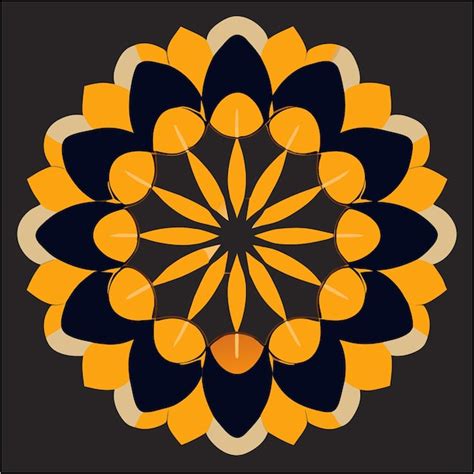
This section delves into the exciting realm of innovation and contemporary expressions in the captivating world of Arabic script. By exploring new possibilities and pushing the boundaries of traditional Arabic writing, artists and designers are unlocking fresh perspectives, fostering cultural development, and inspiring creative dialogue.
Within the realm of Arabic script, innovation and contemporary expressions open up a world of endless possibilities. Through experimental and unconventional approaches, artists are redefining the scope of Arabic writing, defying conventions, and challenging established norms. By blending traditional elements with modern techniques, they create visually striking compositions and breathe new life into the beauty and splendor of Arabic script.
Contemporary Calligraphy: The intersection of traditional calligraphy and contemporary design creates a space for experimentation and artistic expression. Artists explore various letterforms, employ diverse strokes, and use alternative tools, bridging the gap between the past and the present. This dynamic fusion of traditional calligraphy and modern aesthetics rejuvenates Arabic script, captivating audiences with its innovative visual language.
Typography as Art: Typography becomes an art form in itself as designers embrace innovative approaches to showcase the versatility and adaptability of Arabic script. By incorporating unconventional structures, combining diverse styles, and experimenting with typographic hierarchy, designers breathe new life into the written word, transforming it into a powerful visual medium.
Digital Expression: The advent of digital technology has revolutionized the way Arabic script is perceived and utilized. Digital platforms provide an avenue for exploring dynamic visual effects, interactive designs, and motion graphics. Through the integration of technology and Arabic writing, artists push the boundaries of creativity, engaging viewers in immersive digital experiences.
Cultural Context: Innovation in Arabic script is deeply intertwined with cultural preservation and development. By celebrating regional identities and embracing diverse cultural influences, artists infuse their work with a deep sense of heritage and contemporary relevance. Through their artistic expressions, they provoke thought, spark conversations, and foster a deeper understanding of the intricate relationship between language, culture, and creative innovation.
Innovation and contemporary expressions in Arabic writing reflect the ever-evolving nature of language and culture. As artists continue to explore uncharted territories, the boundaries of Arabic script are constantly being pushed, resulting in a dynamic and captivating visual landscape that captivates and inspires audiences around the world.
FAQ
What is the significance of Arabic writing?
Arabic writing holds great significance as it not only represents the Arabic language, but it also carries a rich cultural and historical heritage. It has played a vital role in preserving and passing down knowledge, literature, and religious texts.
How does Arabic writing unleash the beauty of the written word?
Arabic writing is known for its intricate calligraphy and decorative elements that add visual beauty to the written word. The various styles of Arabic calligraphy, such as Naskh and Diwani, enhance the aesthetics and convey the emotions behind the words.
What is the mystery behind Arabic writing?
The mystery of Arabic writing lies in its complex and unique script. The written characters often appear intricate and mysterious to those unfamiliar with the language. The combination of curves, dots, and elongated strokes adds to the enigmatic nature of Arabic writing.
What are some famous Arabic calligraphers?
There have been numerous renowned Arabic calligraphers throughout history. Some notable names include Ibn Muqla, Ibn al-Bawwab, and Yaqut al-Musta'simi. These artists have made significant contributions to the evolution and development of Arabic calligraphy.
How can one learn Arabic calligraphy?
Learning Arabic calligraphy requires dedication and practice. There are specialized courses and workshops available that teach the fundamental techniques and principles of Arabic calligraphy. Additionally, studying the works of renowned calligraphers and practicing regularly is essential to mastering the art form.



